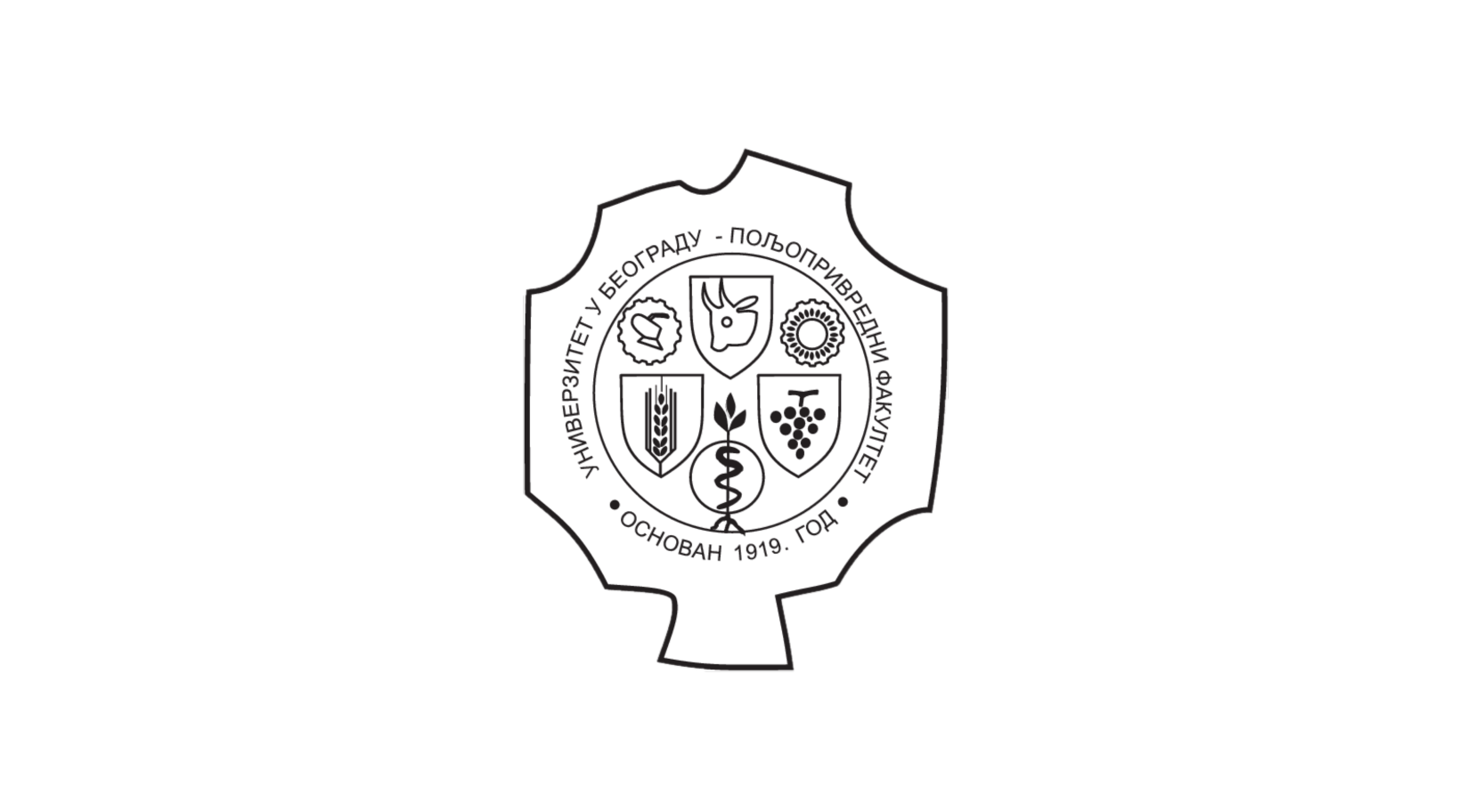Genetic diversity and structure of the West Balkan Pramenka sheep types as revealed by microsatellite and mitochondrial DNA analysis
Само за регистроване кориснике
2008
Аутори
Cinkulov, M.Popovski, Z.
Porcu, K.
Tanaskovska, B.
Hodzić, A.
Bytyqi, H.
Mehmeti, H.
Margeta, Vladimir
Djedović, Radica

Hoda, A.
Trailović, R.
Brka, M.
Marković, B.

Vazić, B.
Vegara, M.
Olsaker, I.
Kantanen, J.
Чланак у часопису (Објављена верзија)

Метаподаци
Приказ свих података о документуАпстракт
Several different phenotypes of the native Pramenka sheep have been developed in the Balkan region for different environmental and socio-cultural conditions. Animals from seven West Balkan Pramenka sheep types were analysed for 15 microsatellite markers and for mitochondrial DNA (mtDNA) and the results were used to assess genetic variation within and among the types and to infer the genetic population structure of the Pramenka sheep. Mean expected heterozygosity and allelic richness over the microsatellite loci and sheep types were 0.78 and 7.9, respectively. A Bayesian statistical method for estimating hidden genetic structure suggested that a core of the largest panmictic population was formed by Serbian, Kosovan, Bosnian, Montenegrin and Albanian types, while Croatian and Macedonian types comprised two other main populations, respectively. Mitochondrial DNA analysis revealed two mtDNA haplogroups in the Pramenka sheep, B and A, with a frequency of 93.7% and 6.3%, respectively. A tot...al of 60 mtDNA haplotypes were found in 64 animals sequenced, and the mean nucleotide and haplotypic diversities over the types were 0.013 and 0.945, respectively. Molecular analysis suggests that the West Balkan Pramenka sheep types have their origins in two distinct maternal lineages of domestic sheep and different Pramenka phenotypes tend to form few panmictic populations. The Pramenka sheep represents a valuable resource of genetic diversity in sheep.
Кључне речи:
Animal genetic resources / DNA marker / genetic variation / Pramenka sheepИзвор:
Journal of Animal Breeding and Genetics, 2008, 125, 6, 417-426Издавач:
- Wiley-Blackwell, Malden
Финансирање / пројекти:
- Norwegian University of Life Sciences
- Norwegian Ministry of Foreign Affairs
DOI: 10.1111/j.1439-0388.2008.00742.x
ISSN: 0931-2668
PubMed: 19134078
WoS: 000261063900009
Scopus: 2-s2.0-55949105553
Институција/група
Poljoprivredni fakultetTY - JOUR AU - Cinkulov, M. AU - Popovski, Z. AU - Porcu, K. AU - Tanaskovska, B. AU - Hodzić, A. AU - Bytyqi, H. AU - Mehmeti, H. AU - Margeta, Vladimir AU - Djedović, Radica AU - Hoda, A. AU - Trailović, R. AU - Brka, M. AU - Marković, B. AU - Vazić, B. AU - Vegara, M. AU - Olsaker, I. AU - Kantanen, J. PY - 2008 UR - http://aspace.agrif.bg.ac.rs/handle/123456789/1768 AB - Several different phenotypes of the native Pramenka sheep have been developed in the Balkan region for different environmental and socio-cultural conditions. Animals from seven West Balkan Pramenka sheep types were analysed for 15 microsatellite markers and for mitochondrial DNA (mtDNA) and the results were used to assess genetic variation within and among the types and to infer the genetic population structure of the Pramenka sheep. Mean expected heterozygosity and allelic richness over the microsatellite loci and sheep types were 0.78 and 7.9, respectively. A Bayesian statistical method for estimating hidden genetic structure suggested that a core of the largest panmictic population was formed by Serbian, Kosovan, Bosnian, Montenegrin and Albanian types, while Croatian and Macedonian types comprised two other main populations, respectively. Mitochondrial DNA analysis revealed two mtDNA haplogroups in the Pramenka sheep, B and A, with a frequency of 93.7% and 6.3%, respectively. A total of 60 mtDNA haplotypes were found in 64 animals sequenced, and the mean nucleotide and haplotypic diversities over the types were 0.013 and 0.945, respectively. Molecular analysis suggests that the West Balkan Pramenka sheep types have their origins in two distinct maternal lineages of domestic sheep and different Pramenka phenotypes tend to form few panmictic populations. The Pramenka sheep represents a valuable resource of genetic diversity in sheep. PB - Wiley-Blackwell, Malden T2 - Journal of Animal Breeding and Genetics T1 - Genetic diversity and structure of the West Balkan Pramenka sheep types as revealed by microsatellite and mitochondrial DNA analysis EP - 426 IS - 6 SP - 417 VL - 125 DO - 10.1111/j.1439-0388.2008.00742.x ER -
@article{
author = "Cinkulov, M. and Popovski, Z. and Porcu, K. and Tanaskovska, B. and Hodzić, A. and Bytyqi, H. and Mehmeti, H. and Margeta, Vladimir and Djedović, Radica and Hoda, A. and Trailović, R. and Brka, M. and Marković, B. and Vazić, B. and Vegara, M. and Olsaker, I. and Kantanen, J.",
year = "2008",
abstract = "Several different phenotypes of the native Pramenka sheep have been developed in the Balkan region for different environmental and socio-cultural conditions. Animals from seven West Balkan Pramenka sheep types were analysed for 15 microsatellite markers and for mitochondrial DNA (mtDNA) and the results were used to assess genetic variation within and among the types and to infer the genetic population structure of the Pramenka sheep. Mean expected heterozygosity and allelic richness over the microsatellite loci and sheep types were 0.78 and 7.9, respectively. A Bayesian statistical method for estimating hidden genetic structure suggested that a core of the largest panmictic population was formed by Serbian, Kosovan, Bosnian, Montenegrin and Albanian types, while Croatian and Macedonian types comprised two other main populations, respectively. Mitochondrial DNA analysis revealed two mtDNA haplogroups in the Pramenka sheep, B and A, with a frequency of 93.7% and 6.3%, respectively. A total of 60 mtDNA haplotypes were found in 64 animals sequenced, and the mean nucleotide and haplotypic diversities over the types were 0.013 and 0.945, respectively. Molecular analysis suggests that the West Balkan Pramenka sheep types have their origins in two distinct maternal lineages of domestic sheep and different Pramenka phenotypes tend to form few panmictic populations. The Pramenka sheep represents a valuable resource of genetic diversity in sheep.",
publisher = "Wiley-Blackwell, Malden",
journal = "Journal of Animal Breeding and Genetics",
title = "Genetic diversity and structure of the West Balkan Pramenka sheep types as revealed by microsatellite and mitochondrial DNA analysis",
pages = "426-417",
number = "6",
volume = "125",
doi = "10.1111/j.1439-0388.2008.00742.x"
}
Cinkulov, M., Popovski, Z., Porcu, K., Tanaskovska, B., Hodzić, A., Bytyqi, H., Mehmeti, H., Margeta, V., Djedović, R., Hoda, A., Trailović, R., Brka, M., Marković, B., Vazić, B., Vegara, M., Olsaker, I.,& Kantanen, J.. (2008). Genetic diversity and structure of the West Balkan Pramenka sheep types as revealed by microsatellite and mitochondrial DNA analysis. in Journal of Animal Breeding and Genetics Wiley-Blackwell, Malden., 125(6), 417-426. https://doi.org/10.1111/j.1439-0388.2008.00742.x
Cinkulov M, Popovski Z, Porcu K, Tanaskovska B, Hodzić A, Bytyqi H, Mehmeti H, Margeta V, Djedović R, Hoda A, Trailović R, Brka M, Marković B, Vazić B, Vegara M, Olsaker I, Kantanen J. Genetic diversity and structure of the West Balkan Pramenka sheep types as revealed by microsatellite and mitochondrial DNA analysis. in Journal of Animal Breeding and Genetics. 2008;125(6):417-426. doi:10.1111/j.1439-0388.2008.00742.x .
Cinkulov, M., Popovski, Z., Porcu, K., Tanaskovska, B., Hodzić, A., Bytyqi, H., Mehmeti, H., Margeta, Vladimir, Djedović, Radica, Hoda, A., Trailović, R., Brka, M., Marković, B., Vazić, B., Vegara, M., Olsaker, I., Kantanen, J., "Genetic diversity and structure of the West Balkan Pramenka sheep types as revealed by microsatellite and mitochondrial DNA analysis" in Journal of Animal Breeding and Genetics, 125, no. 6 (2008):417-426, https://doi.org/10.1111/j.1439-0388.2008.00742.x . .

